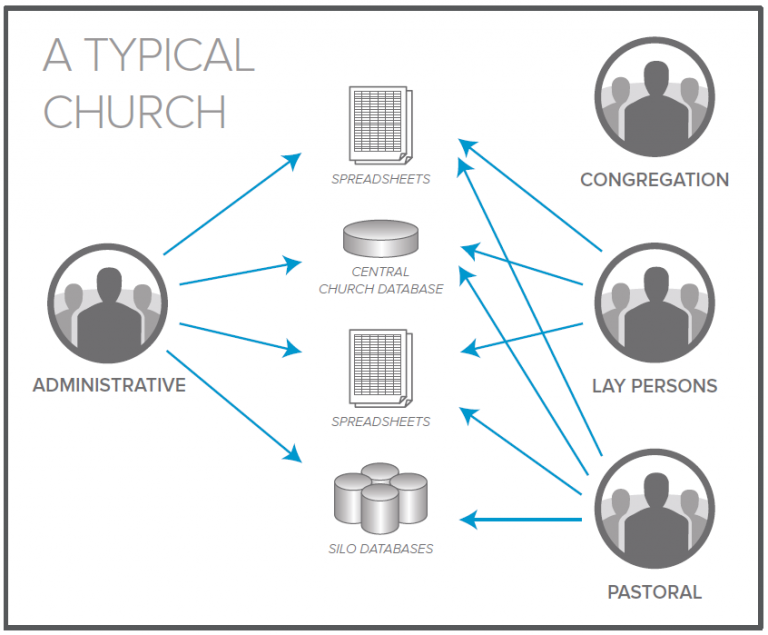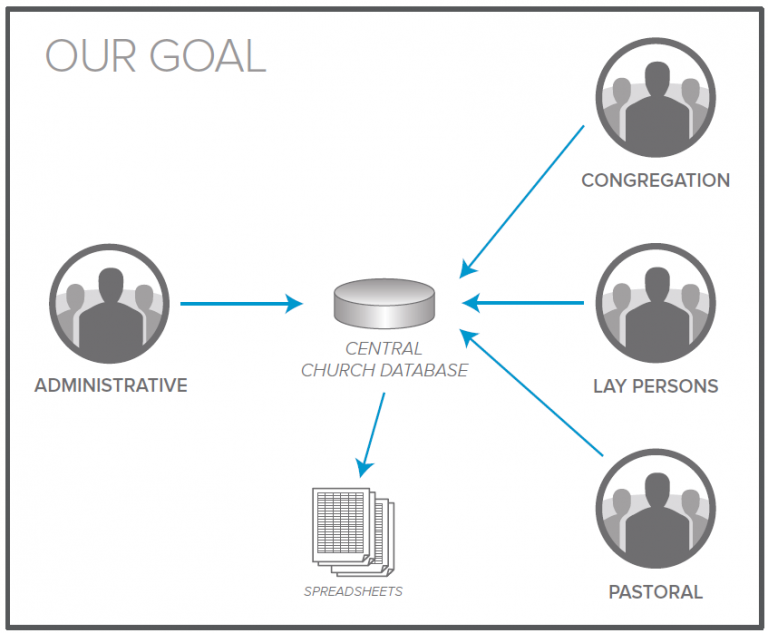
In our survey of churches, we find that most churches have at least 4 databases. Quite a few others are blending data from 8 to 15 sources.
What’s your number? And why does it matter? With every additional database, the risk of error and data omissions increases. It starts when ministry leaders want to take care of their own data (so it will be trustworthy), but then, data upkeep and poor communication lead to at least three potential problems, according to Katie Smith, Ministry Software Coordinator at a large church for nearly five years:
1. Wasted Time and Money
Johnny Jackson’s parents tell the Sports Ministry Leader about an address change, and he updates his own system. The Jacksons believe that the church now has their new information. Later, the Youth Minister sends out camp information—or the main office sends out a contribution statement —to the addresses in their individual ministry spreadsheets.
Not only do the Jacksons not receive the camp details or their contribution statement, but also the church has to pay 44¢ in return postage if the mail-out is returned. Although this alerts the staff to contact the Jacksons to find out why their mail is being returned, it also leaves the impression that the church’s right hand doesn’t know what its left hand is doing.
2. Embarrassment Along the same lines, but even worse, what if the church hosted a funeral for a long-time member and several months later, his widow received a letter from the men’s ministry inviting him to the upcoming retreat?
3. Broken Trust and Increased Ministry Inefficiency
Incorrect or incomplete data can cause a lack of confidence in the church’s level of efficiency, and even its sincerity regarding member care. Multiple databases also handicap ministry leaders who need access to reliable information, and adds to the church’s administrative expenses. A central database is the best foundation against these issues.
In a perfect world, this is the best possible scenario:

All changes are made to the one data source that everyone works out of. Reports can then accurately measure across many different ministries and data points, including giving, attendance, service, and spiritual growth tracking, allowing for that coveted 360-degree view that is so essential to exceptional member care.
Imagine being able to compare the ratio of attenders and givers across zipcodes to determine the next place to plan a new campus. Wouldn’t it be great to correlate children’s check-in with parents’ attendance to get a full household perspective?
No Silver Bullet
As there is no church management software that does it all, it’s conceivable that more than one database is inevitable. Choosing third-party software that can integrate with the central database can reduce potential inefficiencies. It’s also wise to maintain any absolutely unavoidable separate databases through the central office, so updates can be made in the main database as needed.
The Problem of Blended Data
Besides the inefficiences I’ve described, we view multiple databases as a barrier to the accurate reporting required for predictive decision-making and for really understanding what’s happening in your church.
It’s no easy task to effectively measure and understand your data. It’s next to impossible with blended data from different sources.
How many databases do you have? How many could you eliminate?



